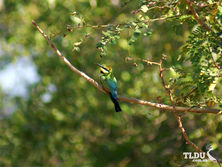
Shoppers Feedback:
Jan 17, 2017
Hello Ros,
I have now paid the invoice, but I would like to write to you just to say a big THANK YOU for getting me the Penguin!
The ChatterMate Penguin became a nice memory for me when I was in New Zealand, and I am so greatful to you for arranging so that I could have it! :-)
Thank you so much!!!!!!!!!!!
Regards,
Malin
Hi Ros,
Many thanks for your very kind email. I really appreciate your prompt reply!
I appreciate your advice regarding the decorations and customs. These are a gift for my daughter’s exchange student family so when she returns home on the weekend I will show her and see if she loves them as much as I do!
Thanks so very much again - I am truly grateful for your kind assistance.
Kind Regards
Bernadette
Ros,
Thanks again for the great customer service. It's a refreshing change!
Best regards,
Trevor
Hey Roz,
Thank you for your emails. Just loved my first order. The cute little Aussie bush critters are going to be used for an office Christmas decoration. My colleagues also liked them and talked about making an order to your site. I'll send you a photo when completed.
I'll be ordering more to send to my daughter's host family in America.
Fabulous service from you.
Kind regards,
Michelle
Thankyou. Order arrived today. One very happy grandson with his new beastly binoculars.
Regards,
Irene
- Home
- Wild Wonders
- Shop
- Aromas of Australia
- Australian Made
- Books
- Book Marks
- Christmas Decoration Sale
- Christmas Decorations
- Clocks
- Drink Holders
- Garden & Outdoor
- Gift Wrapping & Cards
- Home & Giftware
- Jewellery
- Keyrings
- New Products
- Pencils & Pen Holders
- Photo Frames
- Plush Toys
- Plush with Sound
- Sheepskin Rugs
- Stationery
- Stone Carvings
- Toys & Games
- Travel Goods
- Wedding
- Wild Figurines
- Wildlife Safety Products
- Wind Chimes
- Wine Charms
- View All Products
- Wildlife
- Australiana
- Explore
- Contact Us
Rainbow Bee-eater

Quick Facts
| Length: | 24 cm |
| Height: | - |
| Weight: | 27 grams |
| Colour: | - |
| Habitat: | Open forests, woodland and shrublands, cleared areas usually near water |
| Food: | Insects, mainly bees and wasps, but include dragonflies, beetles, butterflies and moths |
| Predators: | Foxes and wild dogs |
| Status: | Not Present in TAS. Secure in all other states and territories in Australia |
A striking, colourful bird, the Rainbow Bee-eater is medium sized, with a long slim curved bill and a long tail with distinctive tail-streamers. It has a golden crown and a red eye set in a wide black stripe from the base of the bill to the ears, which is edged with a thin blue line. The throat is orange-yellow, with a broad black band separating it from a green breast. The upperparts are green, with the flight feathers coppery and black tipped. The underwings are bright orange, with a black edge. The lower abdomen is blue. The tail is black, including the long tail streamers, with a blue tinge. Females have shorter, thicker tail streamers than males, but are otherwise similar. Young birds are duller and greener, lacking the black band on the chest and the long tail streamers.
The Rainbow Bee-eater may resemble some kingfishers, however these are plumper, with strong straight beaks, and never catch prey in flight.
The Rainbow Bee-eater is found throughout mainland Australia, as well as eastern Indonesia, New Guinea and, rarely, the Solomon Islands. In Australia it is widespread, except in desert areas, and breeds throughout most of its range, although southern birds move north to breed.
The Rainbow Bee-eater is most often found in open forests, woodlands and shrublands, and cleared areas, usually near water. It will be found on farmland with remnant vegetation and in orchards and vineyards. It will use disturbed sites such as quarries, cuttings and mines to build its nesting tunnels.
Southern populations move north, often in huge flocks, during winter; northern populations are present year round.
Rainbow Bee-eaters eat insects, mainly catching bees and wasps, as well as dragonflies, beetles, butterflies and moths. They catch flying insects on the wing and carry them back to a perch to beat them against it before swallowing them. Bees and wasps are rubbed against the perch to remove the stings and venom glands.
Rainbow Bee-eaters gather in small flocks before returning to summer breeding areas after over-wintering in the north (apart from the resident northern populations). Both males and females select a suitable nesting site in a sandy bank and dig a long tunnel (average length: 89.4 cm) leading to a nesting chamber, which is often lined with grasses. Both parents incubate the eggs and both feed the young, sometimes with the assistance of auxiliaries (helpers).
Human activities can disrupt Rainbow Bee-eater nests built in active mines or quarries. Introduced predators such as foxes and wild dogs can dig down into nests to eat nestlings. Sometimes collide with lighthouses when migrating.
Last Updated: Thursday 9th January, 2014
BirdLife Australia - www.birdlife.org.au
BUSH e-TELEGRAPH
Signup for our monthly newsletter the "e-Telegraph"
Quick Links
Home | The Beginning | About The Land Down Under | Wild Wonders | Advertise on Wild Wonders | Christmas Decoration Sale | Christmas Tree Decorations | Drink Holders | Plush with Sound | Stone Carvings | Wildlife Wine Charms | Freebies | Australian Wildlife | Help Our Wildlife | Australiana | Photo of the Month | Explore The Land Down Under | Contact Us | Legal Notices

